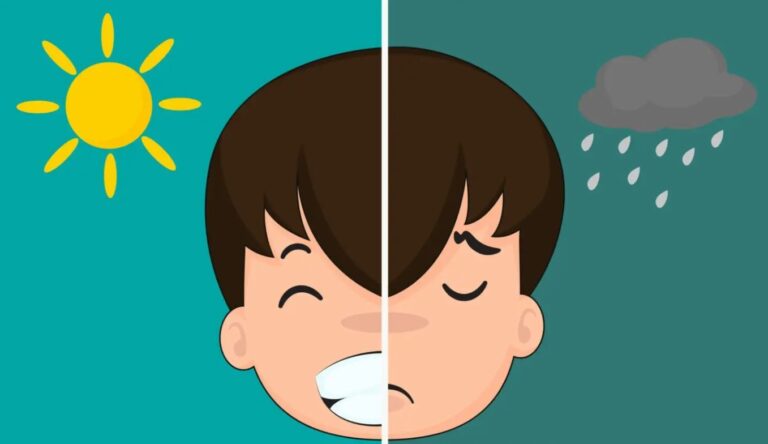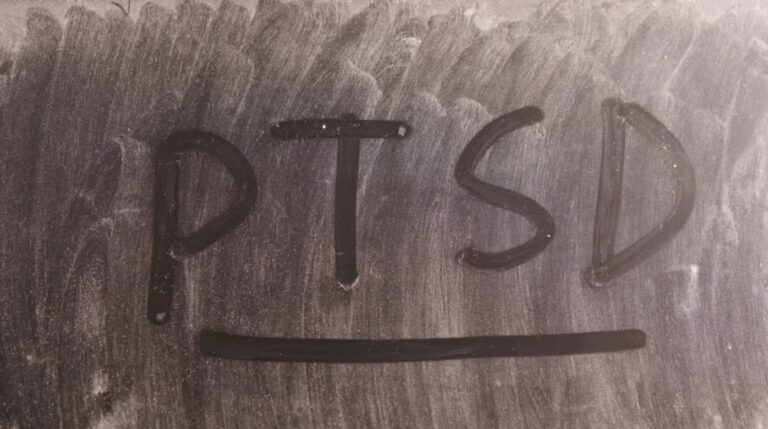Bipolar disorder is a challenging mental health condition that affects millions of people worldwide. It involves significant mood swings ranging from periods of abnormally elevated or irritable mood to periods of depression. These mood changes are sudden and can interfere with many aspects of daily life, including relationships, work, and self-care.
Managing bipolar disorder is an ongoing process that looks different for each person. With the proper treatment plan and lifestyle strategies, however, people can significantly improve their mood stability and quality of life.
Types of Bipolar Disorder

We all know the rollercoaster feeling, those ups and downs that seem to have a mind of their own. Some rides feel smoother than others, but the path is rarely straight. With conditions like bipolar disorder, the swings can seem almost unfair – one moment flying high and fueled, the next plunged so low you wonder if you’ll ever climb out.
Bipolar I Disorder
This diagnosis is given when a person experiences at least one manic episode, which causes severe changes in functioning and thoughts. Both manic highs and depressive lows characterize this disorder.
Bipolar II Disorder
Those with this classification have experienced at least one major depressive episode along with one hypomanic episode, but no full manic episodes. Hypomania involves less severe symptoms than mania. (1)
Cyclothymic Disorder
Fluctuating between hypomanic and depressive symptoms is the hallmark of this disorder type. Episodes must last at least two years in adults or one year in youth.
Other Specified/Unspecified Bipolar Disorders
Some cases do not neatly fit one of the established subtypes. This category includes bipolar-like presentations caused by medical conditions or substance use.
Rapid Cycling
At least four mood shifts within a 12-month period that includes rapid cycling bipolar disorder. Episodes involve manic, hypomanic, or depressive symptoms. This symptom pattern can pose distinct challenges.
Causes of Bipolar Disorder
We all know what it’s like to go through mood shifts, those times when feelings seem to have minds of their own. But for some, the causes behind those shifts hold deeper mysteries.
Genetic Factors
It’s clear this condition tends to run in families. Research finds over two-thirds of those experiencing these mood shifts have close relatives facing similar challenges. Scientists are making strides in identifying specific genes that may contribute through genome studies. Our DNA deals the first hand, but how we choose to play it remains unscripted. (2)
Biological Factors
Comparisons show differences in brain structure and activity between those experiencing these mood shifts and those spared their battles. Transmitters like serotonin and dopamine seem off-kilter too. While the exact significance eludes us, every discovery pulls back the curtain on compassion. (3)
Environmental Triggers
Stress takes its toll, from losses to daily life strains. Substances meant to soothe often end up stoking volatility instead. And lack of rest lets worries wild into mania or morass. While outside forces exert pressure, breath-by-breath within lies power over pressure.
Complex Interplay of Factors
It’s likely caused by an interaction between genetic, biological, and environmental influences, not any single determinant. Understanding this complexity can aid in treatment and support.
Symptoms of Bipolar Disorder
- Mania and Hypomania
- Depressive Episodes
- Mixed Episodes
Mania & Hypomania
Mania involves severe impairment from euphoria and hyperactivity. Hypomania resembles mania but lacks significant impairment. Both include elevated mood, increased energy/activity, and reduced sleep needs. However, mania features psychotic symptoms while hypomania comprises heightened creativity and productivity.
Depressive State
Depressive episodes are characterized by pervasive and impairing low mood coupled with vegetative changes. Individuals experience sadness, hopelessness, lack of interest in activities, appetite/weight disturbances, and fatigue despite altered sleep patterns. Concentration difficulties and thoughts of death are common.
Mixed State Symptoms
The complexity of mixed states stems from simultaneous manic/hypomanic and depressive symptomatology. Agitation, anxiety, racing thoughts, and severe insomnia emerge from conflicting energy levels and emotions. Sadness co-occurs with irritability while hopelessness combines with hyperactivity, magnifying self-harm risk. (4)
Clinical Implications
Mania requires prompt intervention to prevent harm from euphoric delirium or impulsivity. Depression warrants support and suicide assessment. Mixed states necessitate intricate care coordination to address multiple concurrent issues.
When the doctor looks at how the biological, mental, and social factors all fit together for that specific person, it helps them come up with a proper treatment plan.
Diagnosing Bipolar Disorder
Accurate diagnosis involves a thorough evaluation by a doctor, typically a psychiatrist or psychologist, using various tools and assessments.
Steps in Diagnosis
- Physical Examination: A complete physical exam helps rule out other medical conditions that might be causing the symptoms. Conditions such as thyroid disorders, neurological disorders, and substance use can mimic symptoms of bipolar disorder.
- Medical History: A detailed medical history, including a review of current and past symptoms, family history of mental health disorders, and any previous treatments or medications, is crucial. This history helps the doctor understand the pattern and severity of mood episodes.
- Psychiatric Assessment: The doctor conducts a thorough psychiatric evaluation.
Risk of Misdiagnosis
- Schizophrenia: Severe manic episodes with psychotic features can be misdiagnosed as schizophrenia.
- Borderline Personality Disorder (BPD): Emotional instability in bipolar disorder can resemble symptoms of BPD.
- Major Depression: The depressive phases of bipolar disorder can be misdiagnosed as unipolar depression, which requires different treatment approaches.
Treatment
Effective care blends medication, therapy, lifestyle shifts and more. Goals are easing symptoms, extending calm spells, finding fulfillment.
Medication
Mood stabilizers are often a good place to start since they target the root cause of the shifts in moods.
Lithium has helped many feel more in control of especially manic tendencies and even lessened suicidal thoughts for some.
Valproate offers relief from intense manic or mixed episodes that may otherwise feel overwhelming.
And lamotrigine has been a game changer for the depressive lows that can make life feel bleak and colorless.
Antipsychotics
Antidepressants
- Selective Serotonin Reuptake Inhibitors (SSRIs): Such as fluoxetine (Prozac).
- Serotonin-Norepinephrine Reuptake Inhibitors (SNRIs): Such as venlafaxine (Effexor)
Anti-Anxiety Medications and Sedatives
- Benzodiazepines: Such as clonazepam (Klonopin) and lorazepam (Ativan)
Psychotherapy
While medications help treat bipolar disorder physically, therapy plays an equally vital role in supporting people’s mental well-being. Several types exist to help different needs.
CBT teaches skills like catching negative thoughts to prevent downward spirals. Simply noticing patterns can ease depression and anxiety’s grip.
Psychoeducation spreads awareness about bipolar’s nuances to families too. Togetherness strengthens when relatives understand the early signs of episodes.
Families facing conflicts get assistance navigating tough discussions through therapy. Improved listening lessens pressure building at home.
And IPSRT is proven to regulate daily habits calm mood swings. (5)
Lifestyle and Home Remedies
Moving the body can physically and mentally shift symptoms like low and anxiety. Exercise doesn’t have to be intense – even a walk in nature reaps feel-good benefits. Eating nourishing whole foods likewise nourishes the brain and wellness from the inside out.
Getting quality, regular sleep is so valuable too. Having consistent bedtimes respects our body’s natural circadian rhythms and ability to self-regulate mental stability day by day. That said, maintaining calm through stress is key as worry can exacerbate moods. Gentle practices like deep breathing, meditation or yoga relax both mind and spirit.
Other Treatments
In desperate times, electroconvulsive therapy may provide literally lifesaving relief by rapidly lifting severely low or frantic moods otherwise untouchable. As an intensely monitored medical procedure, ECT pulls people from dark depths when all else appears lost.
For others, noninvasive transcranial magnetic stimulation shows promise sparing the brain from further imbalance in a controlled setting. Though not a cure, its magnetic fields stimulate recalibration that sedates episodes standard care failed to calm.
Last Words
Managing any mental health condition is a lifelong process that demands patience, self-compassion, and community support. For those navigating bipolar disorder specifically, each new day presents challenges as well as opportunities for personal growth.
While medication and therapy provide a crucial foundation, ultimate wellness depends heavily on how individuals prioritize caring for their whole selves – mind, body and spirit – according to what truly fulfills them from within.
References
- E Vieta, C Gastó, A Otero, E Nieto, J Vallejo, Differential features between bipolar I and bipolar II disorder, Comprehensive Psychiatry, Volume 38, Issue 2, 1997, Pages 98-101, ISSN 0010-440X,
- Kerner, B. (2014). Genetics of bipolar disorder. The Application of Clinical Genetics, 7, 33–42. https://doi.org/10.2147/TACG.S39297
- Ekaterina Sigitova MD, Zdeněk Fišar MSci, PhD, Jana Hroudová MPharm, PhD, Tereza Cikánková MPharm, Jiří Raboch MD, DSc
- Fiedorowicz, Jess G. MD, MS; Solomon, David A. MD; Endicott, Jean PhD; Leon, Andrew C. PhD; Li, Chunshan MA; Rice, John P. PhD; Coryell, William H. MD. Manic/Hypomanic Symptom Burden and Cardiovascular Mortality in Bipolar Disorder. Psychosomatic Medicine 71(6):p 598-606, July 2009. | DOI: 10.1097/PSY.0b013e3181acee26
- Frank E, Swartz HA, Boland E. Interpersonal and social rhythm therapy: an intervention addressing rhythm dysregulation in bipolar disorder. Dialogues Clin Neurosci. 2007;9(3):325-32. doi: 10.31887/DCNS.2007.9.3/efrank. PMID: 17969869; PMCID: PMC3202498.
Related Posts:
- What is Schizoaffective Disorder? Causes, Symptoms,…
- What is Post Trauma Stress Disorder (PTSD)? Causes,…
- What Is Depression? Causes, Symptoms, and Treatment
- What is Schizophrenia? Causes, Symptoms, and Treatment
- What is Anxiety? Causes, Symptoms, and Treatment
- High Functioning Bipolar Disorder - How It Affects…


















